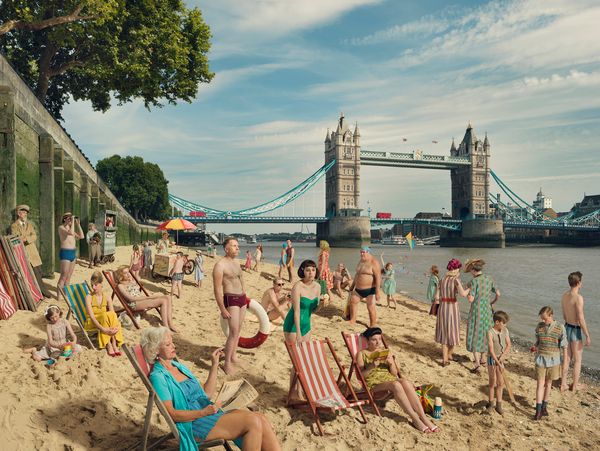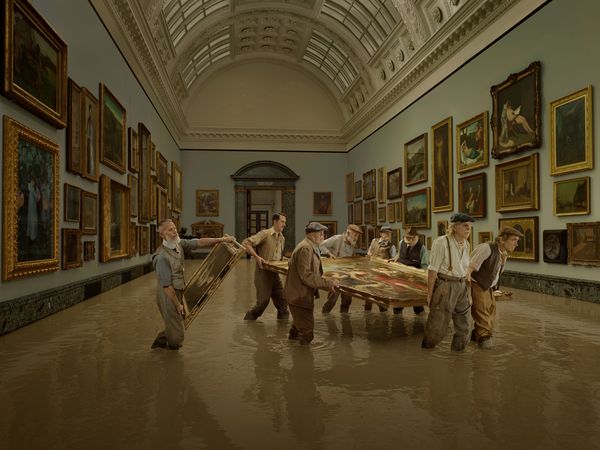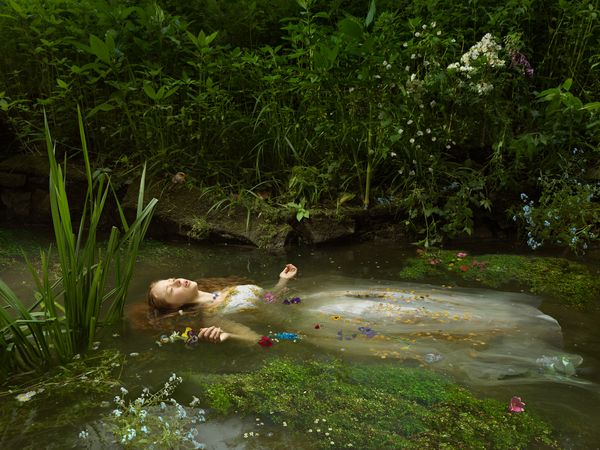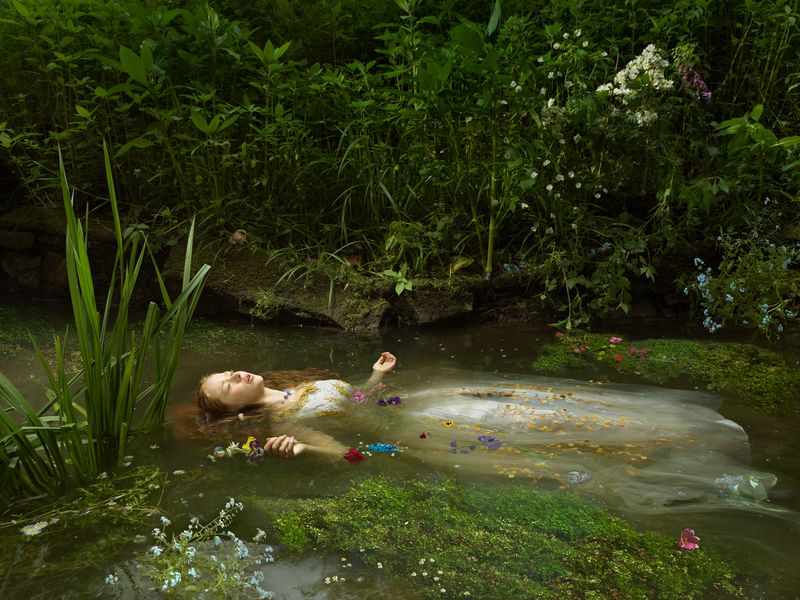Recreating Historical Stories of the River Thames
-
Published31 Jan 2019
-
Author
In an ongoing series, fine art photographer Julia Fullerton-Batten investigates and recreates some of the centuries-old customs and traditions that played out on the banks of the River Thames.
In an ongoing series, fine art photographer Julia Fullerton-Batten investigates and recreates some of the centuries-old customs and traditions that played out on the banks of the River Thames.
© Julia Fullerton-Batten, from the series, Old Father Thames. Bathers by Tower Bridge, 2018
Julia Fullerton-Batten has been fascinated with the River Thames ever since she moved to Oxford, England, as a teenager. “I used to spend a lot of time at Port Meadow, walking along the river with friends. But only when I arrived in London did I start to research the Thames’ history.”
From a friend collecting treasures from ancient times unveiled by the low tide, she learned about the Mudlarks - dirty, barefoot, young boys who in Victorian times scavenged for anything brought up by the river that they could sell. From her love for fine arts, she dug into the origin of Ophelia, by John Everett Millais, whose landscape was captured by the Hogsmill River, an estuary of the Thames. And from various readings, she discovered a number of other stories that she was eager to tell – Londoners sunbathing on the banks; prostitutes attracting customers on the river; priests celebrating baptism; love letters lost in the mud; famous people dead in the water; floods regularly depriving Londoners of their homes and museums of their art pieces.
© Julia Fullerton-Batten, from the series, Old Father Thames. 1928 Flooding of the Tate Gallery, 2018
All of them, Fullerton-Batten turned them into a series of meticulously staged photographs, encompassing every detail she could get to be as accurate as possible. “Ophelia is a strict representation of the original drawing. I had to source an antique dress, and every flower as I knew the importance they had in Shakespeare’s play”, she recounts. Each picture is the result of a long pre-production process, and the shoot itself can sometimes prove precarious. “I had to hire three test models to pose as Ophelia since I had to make sure everything was set up for the actual model not to freeze!”
One of the pleasures of looking at Fullerton-Batten’s series is to try and imagine all these back stories, to carefully study the vintage costumes she could get her hands on, and to travel back in the times when the stories originate. “I’m very attracted to re-creating scenes. It’s like a split moment from a film”, she comments. “With time the scenes have become more elaborate. My biggest shoot so far is yet to come. It will be a reproduction of the frost fair on the Thames, including 40 performers, circus artists, and so on”, she teases. For now, there are already 18 photographs to get lost in, with long texts contextualising them. “Text is important in this series - the photos refer to such great stories!”
© Julia Fullerton-Batten, from the series, Old Father Thames. Ophelia after Millais, 2018
--------------
Julia Fullerton-Batten is a worldwide acclaimed and exhibited fine-art photographer. Her body of work now encompasses twelve major projects spanning a decade of engagement in the field. Follow her on PHmuseum and Instagram.
Laurence Cornet is a writer and curator based in Brooklyn focusing on cultural and environmental issues.
--------------
This article is part of our feature series, Photo Kernel, which aims to give space to the best contemporary practitioners in our community. The word Kernel means the core, centre, or essence of an object, but it also refers to image processing.





